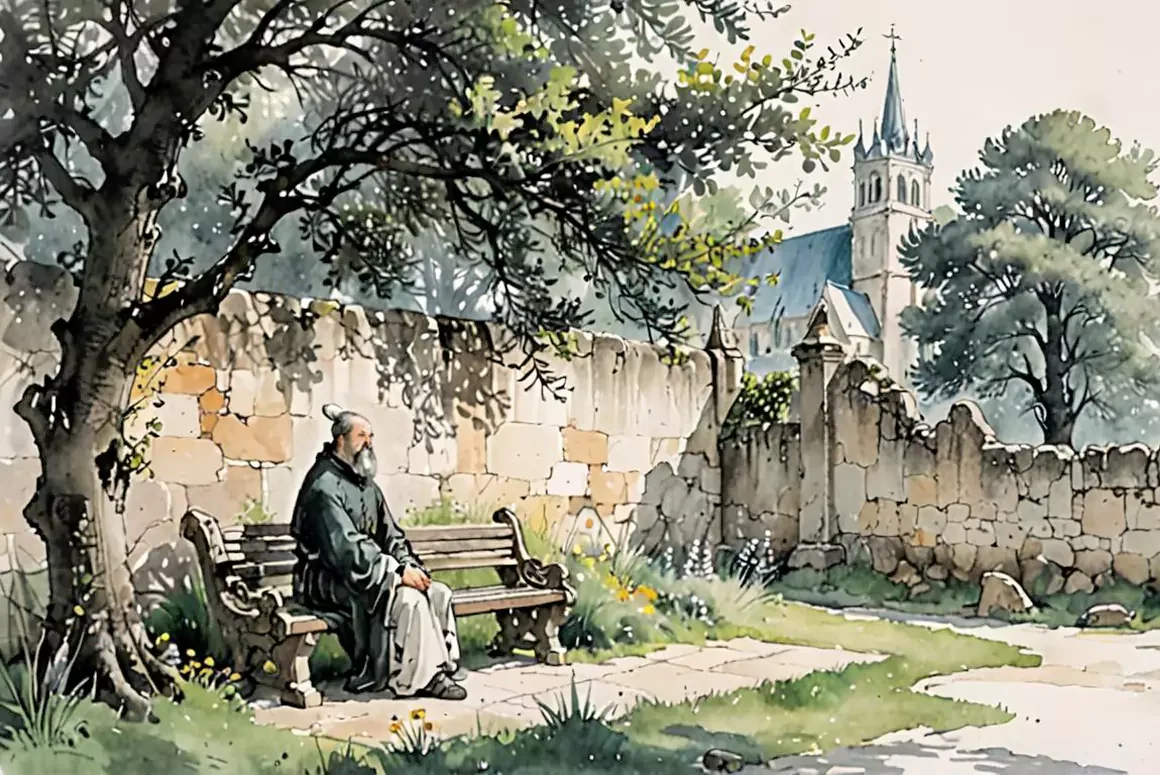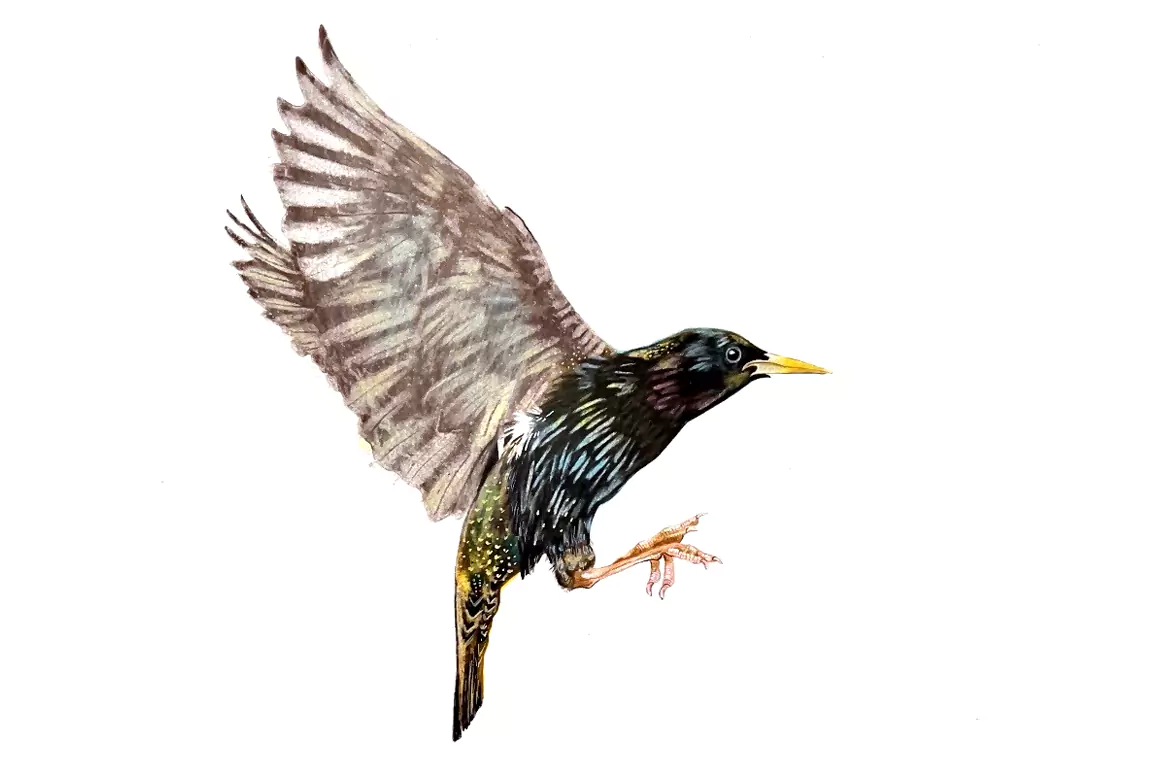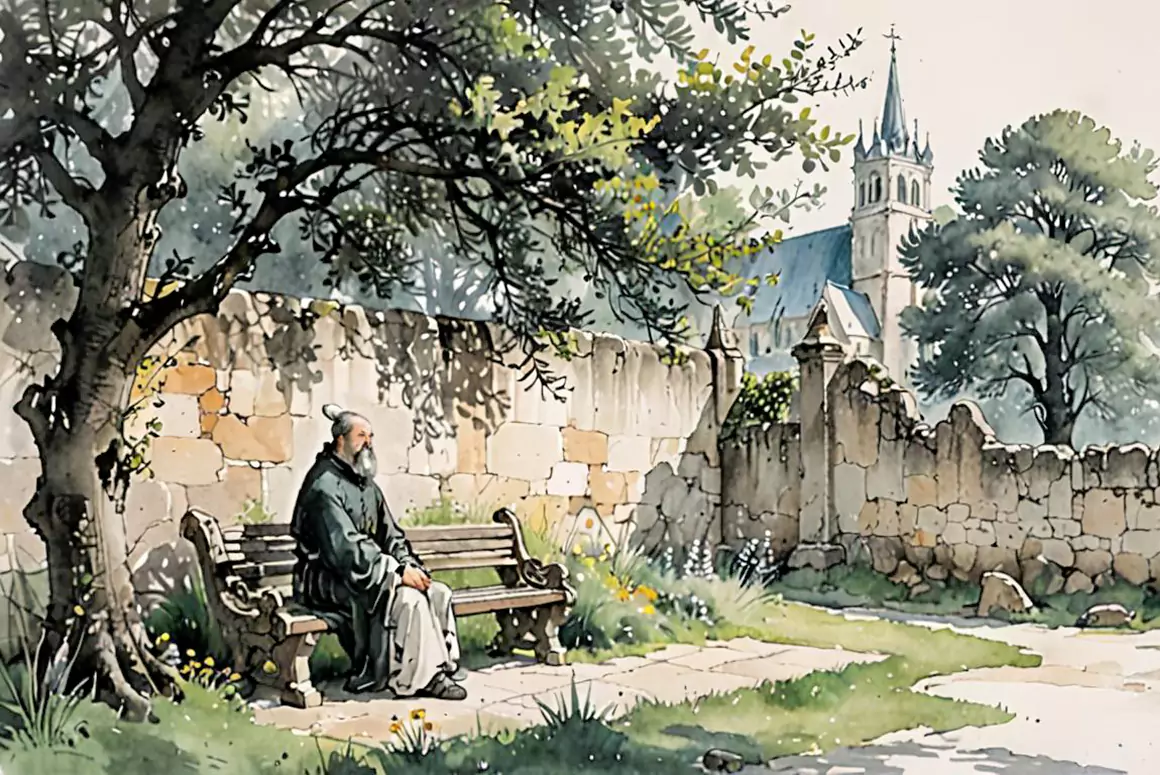I think I’ll just stop here a moment and rest. As good a place as any, and probably better than most others, in fact, I’ve had this little nook in mind since I started my walk. It’s nothing special to the passing observer – just a bench next to the outer wall of a church along the route – but it’s a good spot. For now, too, it’s an ideal place to lay up my bones awhile and to enjoy this coffee and slice of cake.
I don’t know who decided to place this seat right here, but whoever they were, I think we would get along just fine, for I would have chosen exactly the same position. The longer I sit here each time I visit, the more I come to think that they and I surely share a similar outlook upon life, and have sought the same things in our time.
For one thing, the fact that it backs onto a wall is absolute genius. Normally, the idea of being outside a wall would create a sense of estrangement, perhaps, of alienation and outsiderness, but not this one, for it is the wall of a medieval churchyard, and sitting here affords the wayfarer an aspect that, aside for the modern cars, might have been lifted from a postcard at any time over the last hundred years or more: a small green surrounded by a couple of pubs, a raft of pretty houses, the nigh on thousand-year-old church and this bench, beside this wall, facing an old tree.
As well as a place to sit, these features also provide reference points for the wanderer, not only of the spatial kind, but also of the temporal, ever-constant markers amid in the seasonal shifts in landscape and conditions. Indeed, I have known this scene throughout the entire calendar year. I have known it sitting here in the wintry silence, mist and drizzle on a bleak November day; I have known it upon the stark, breathtakingly clear cold of February mornings punctuated only by worshippers filing through the near gate and the occasional passing dog walker. I have known it, too, during spring’s full pomp, the verges along the little road running past the green aglow with daffodils and the spring sun bright, clear and most welcome after the shadows of winter.
Now, though, is perhaps the loveliest time in which to enjoy this vista; it is at this time, as spring prepares to make way for summer that I think I fully appreciate the foresight of that person who chose the placement of this bench. They too must have sat here as I have, closed their eyes and just felt all of this – the gentle touch of sunlight on the face, across the eyelids, the freshness of that gentle wind across the skin – but also the warmth from behind, where that boundary wall captures all the sun’s heat and radiates it back outward, suffusing the passer-by with a desire to linger just a little while longer. The tables outside those pubs are packed with thirsty travellers, the leaves in the tree above me whisper sweet nothings into a warm breeze, and the green is alive with bounding dogs and children running and kicking footballs around; “Such, such were the joys./When we all girls and boys,/In our youth-time were seen,/On the Ecchoing Green.”
I like boundary walls like this one. Some might see them as uninviting and confrontational, but I think that they turn the world into a series of destinations and small corners that give the passing wanderer direction and a sense of purpose. There must have been something pleasant about reaching a town’s stockades or the boundary of a homestead in years gone by – the idea of arrival, of reaching a specific place, with its own identity and its own brand of warm welcome enclosed within its walls, is a very appealing thought indeed.
Some see them as a very adamant “Keep out!” the sweep of a child’s arm enclosing their class work or collecting in their marbles as they declare: “This is mine”, but these enclosure walls are often fascinating because of what they contain. Take this church at my back. Built nearly a millennium ago, its grounds contain many of the great and good who once lived in this immediate area. This place has gathered them in and kept them, clustered against the march of time that constantly laps the blocks and mortar that protect them. Mediaeval churchyards, Victorian field boundaries, walls such as these enclose them all, sealing in whatever lies within their boundaries like oxbow lakes cut off from the centuries that flow onward and away into an altered character and a new direction forever, leaving the enclosure insulated against whatever else may come.
Like eyes in an aged face, these walls remain recognisably themselves, carrying identity and recognition despite the ravages of the long years, and looking deep into them seems to allow a glimpse into past and present at once, a unifying sense of linking into a bigger picture. Examining the blocks and mortar of this wall now, the oranges, ambers, whites and greens of the lichens stretch away along its entirety, beyond vision and outward, connecting everything in its own image. Just as lichens are not individual organisms, but rather complex bacterial systems made up of many individual algae, so they join this wall not just with other similar walls, but with any place, seemingly, where one can stop, think, disconnect from the mainstream for a moment and simply watch the world go by.
Concrete bus shelters, bench plinths, headstones in long-overgrown graveyards and even trees in woodland nooks, their recumbent limbs ready to accommodate a footsore rambler, all of these places are alcoves of thought, of silence, of repose, all linked by the commonality of contemplation given physical form by the time-honoured presence of lichens.
More important than ever in the twenty-first century, such spots like this are often disregarded and overlooked, tucked away from the urban flow and yet they are so very important, perhaps more important than ever. It does not matter which of the above they may be, or even a place I haven’t mentioned in this list; what matters is that you have such a place. At the end of a long working week “amid all that blab”, as Walt Whitman had it, such niches allow us to “ebb with the ocean of life”. It is appropriate, I think, that one of my places is here, next to this churchyard, where I find sanctuary from the wide world and “tend inward” rather than outward for just awhile not by hanging desperate fingers from the handle of the church door like some mediaeval refugee, but by simply stretching out my hand, touching bare stone warmed by the spring sunshine and spending a few minutes here, by a lichened wall.





